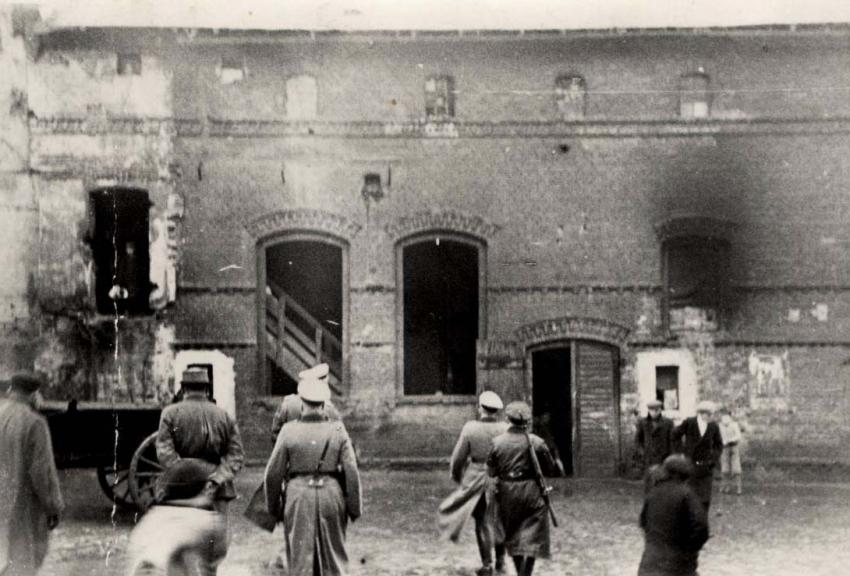At the beginning of September 1939, Chełm was occupied by Nazi Germany, but on 25 September, the Germans withdrew in advance of Soviet forces. The Ribbentrop-Molotov agreement stipulated that Chełm should be under German control, and on 9 October the city was ceded back to Nazi Germany. During their brief period in Chełm, the Soviet authorities established a civil government under a Jewish major, who was a Soviet sympathizer. Fearing reprisals from the Polish residents in Chełm, hundreds of Jews fled together with the retreating Red Army. Immediately following the German occupation, the Jews who remained in Chełm were attacked and brutalized, in part because of their central role during the Communist occupation.
On 1 December 1939, over 1,000 Jews were murdered during the first deportation from Chełm. The commander of the German forces in Chełm ordered the leader of the Jewish community to assemble 2,000 Jewish men between the ages of 16 and 60 in the market square, where some were murdered. The rest were taken to Hrubieszow. Some 1,000 Jewish men were murdered en route. About 400 were forced to swim across the icy Bug River, and most of them drowned. A few hundred of the deportees managed to survive and returned to Chełm.
In December 1939 a ten-member Judenrat was established in Chełm, and almost a year later, at the end of October 1940, the Chełm ghetto was established in an impoverished neighborhood at the edge of the city. At this time the Jews of Chełm were required to relocate to the area within the ghetto walls. A few months later, at the beginning of 1941, dozens of Jews were deported from Chełm and forcibly relocated to the Wlodawa ghetto. This process continued until the end of March 1941. During this period the Germans confiscated the property of the Jews of Chełm, ordering that they report for forced labor, and from time to time demanding large monetary payments to ensure the “safety” of the community. In May 1941, some 2,000 Slovak Jews were deported to Chełm. From the end of 1941 exit from the ghetto was banned. German and Polish policemen were placed as guards at the ghetto’s gates, and a Jewish Order Police of 150 men was established to maintain control inside the ghetto. Sweeping through a population already stricken by hunger and overcrowding, a typhus epidemic claimed many lives. Jews attempted to smuggle food from outside the ghetto; some were apprehended and summarily executed for their actions by the Germans.
During the ghetto period, the Germans continued to fill work quotas for forced labor companies from the Jewish population. For some of those conscripted, forced labor meant relocation to distant labor camps. At the same time, Jews from nearby towns in the Lublin district were confined in the Chełm ghetto. They arrived with no belongings, following marches where they had been tortured by the Germans, and forced to watch the execution of hundreds of their fellow Jews.


